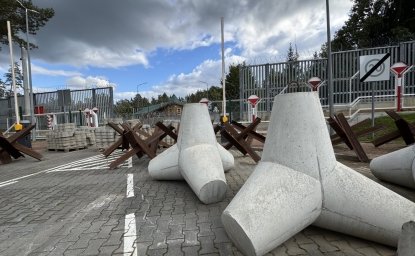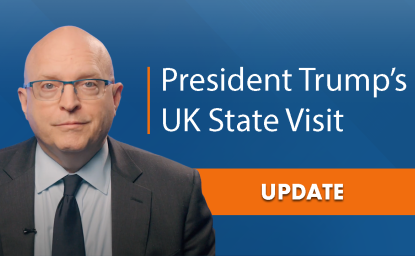In the years following the attacks of September 11, a certain vision about al-Qaeda, global terrorism, and the global terrorism threat became pervasive in North America and the European Union. The argument was espoused not only by many scholars and journalists but also by many government officials and occasionally—perhaps also politically induced—by some experts within the intelligence community. According to the narrative, as a result of the post-9/11 U.S.-led military intervention in Afghanistan as well as the ensuing counterterrorism initiatives in other countries of South Asia, Southeast Asia, the Middle East, and North Africa, the phenomenon of jihadist terrorism underwent a fundamental mutation that can be summarized in the following four basic tenets.
First, as the argument went, al-Qaeda was destroyed as an active terrorist entity with command and control structures or internal hierarchy, becoming powerless and virtually irrelevant. Second, Osama bin Laden himself turned into no more than a symbol, a charismatic figurehead, neither able to lead jihad nor call the shots in any meaningful sense. Third, global jihadism as such devolved into an amorphous, not only decentralized but also disorganized phenomenon devoid of any leadership and strategy. And fourth, as a consequence, the source of the terrorist threat, particularly to open societies in the West, was to be found not in formal jihadist organizations but in independent local cells of homegrown extremists on the periphery of the globalized jihadist movement, acting alone.
However, today, a month after U.S. special forces killed Osama bin Laden, the facts coming from Abbottabad seem to refute this narrative. Initial disclosures of the computer files and paper documents seized at bin Laden's hideout show that, until his death on May 2, despite confinement in his compound and increasing discredit among Muslim publics in recent years, was doing much more than occasionally providing inspirational audio and video propaganda messages to his followers. He was acting as the real leader of an identifiable terrorist organization that serves as the matrix of reference for other jihadist entities across the globe. He was providing express guidance and issuing directives for al-Qaeda's plots to be subsequently developed, exerted authoritative influence over al-Qaeda in the Arabian Peninsula, and meeting in his compound with Pakistani Taliban delegates.
Osama bin Laden was until recently exhorting top operations chiefs of al-Qaeda, including Ayman al Zawahiri and Atiyah Abd al-Rahman, with whom he was in touch frequently and directly, to focus on the United States without missing other countries such as Canada, Israel, the United Kingdom, Spain, and Germany. He suggested timing for strikes in the United States, including July 4 and the 10th anniversary of 9/11. He indicated targets, such as trains at a range of U.S. cities or oil tankers and energy infrastructures at sea. He even mentioned the profile of individuals to be recruited and used to make America weak, including African Americans and Latinos that, according to him, are oppressed in the United States. And he ordered particular modus operandi—for example, coordinated commando attacks at busy tourist sites in at least three Western European nations, including France. Moving beyond the aspirational, he masterminded concrete bomb plots, such as the Easter shopping plan in Manchester in 2009. It is now evident, when looking at the information provided to the press by U. S. officials conducting the initial trawl of the files found in Abbottabad, that bin Laden was quite prolific—so who said "leaderless jihad"?
Furthermore, bin Laden did more than relay messages containing strategic advice to leaders of al-Qaeda in the Arabian Peninsula, confirming this organization as is primus inter pares in franchises' relationship with al-Qaeda's core. Last year, he decided on whether or not AQAP's current leadership should remain unchanged, when requested by the group's head to install Anwar al Awlaki, the American-born jihadist doctrinaire who has an important internet following. Al Shabaab was also receiving instructions from bin Laden. Its top commanders in Somalia have indeed spoken about avenging "the death of our leader." Some two weeks after the SEALs operation, an Afghan Taliban commander said he had visited Osama bin Laden in Abbottabad and the Therik e Taliban Pakistan spokesman called the allegedly interim chief of al-Qaeda, Saif al Adel, "our new leader." All this points to affiliates' coordination with, and subordination to, al-Qaeda leadership.
The news from Abbottabad makes it clear that al-Qaeda was articulate and active up until bin Laden's death, despite being weakened in numbers and degraded in capabilities from 2002. They also suggest that bin Laden continued to exert an important command over its ranks and provide broad strategy. His out-group formal relations further confirm global jihadism not as an amorphous but as a polymorphous phenomenon, and the centrality of al-Qaeda in this heterogeneous, expanded movement made out of collective and individual actors. One decade after September 11, the global terrorist threat is diversified. No one should deny the menace of radicalized lone wolves and inspired independent cells. But the most serious threat in the West, as exemplified in the 2004 Madrid train blasts and the 2005 London suicide bombings, as well as in the major plots meanwhile foiled, is posed by organized, articulate jihadist entities, including a leaderled al-Qaeda.
Related Links



